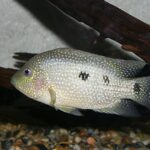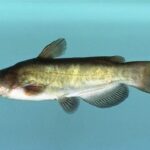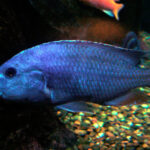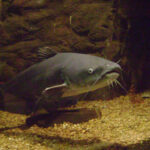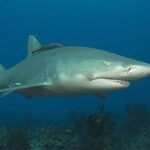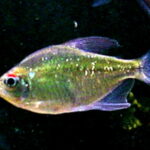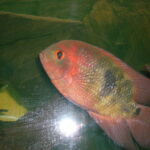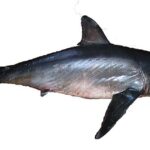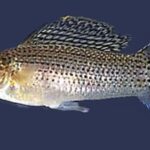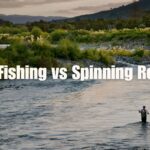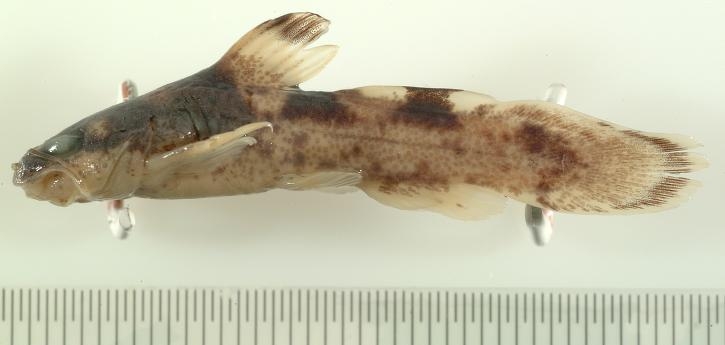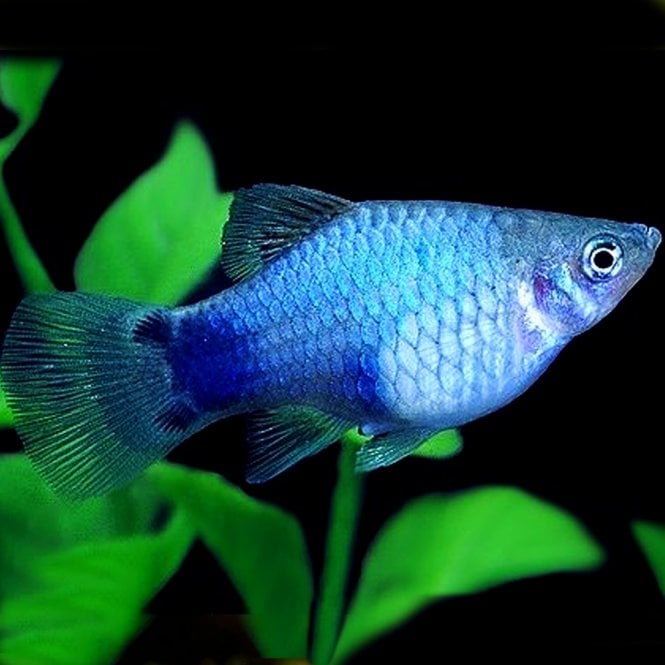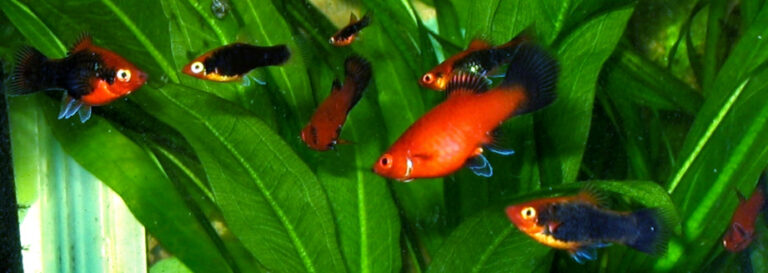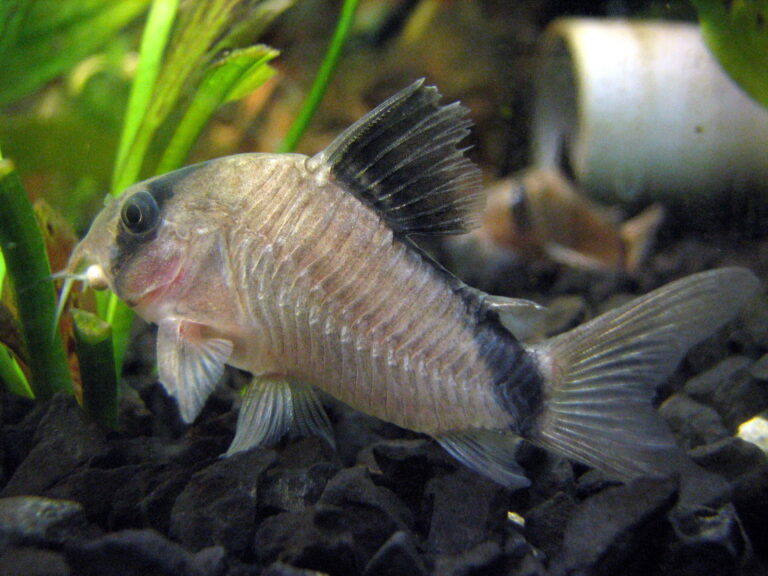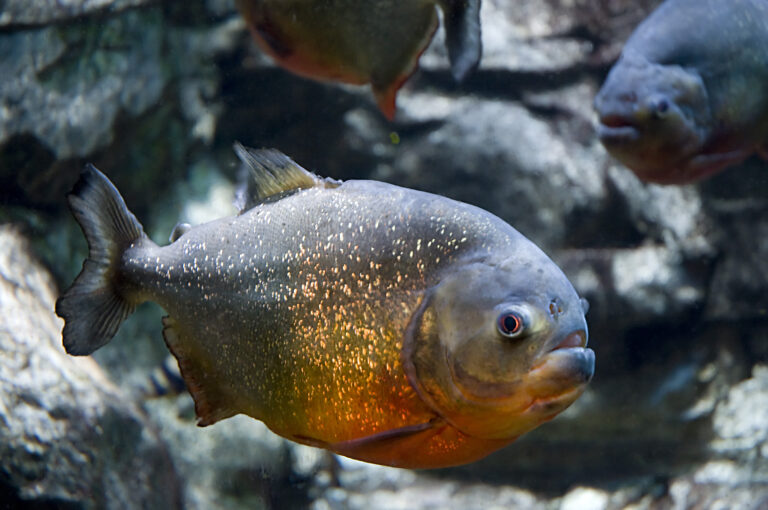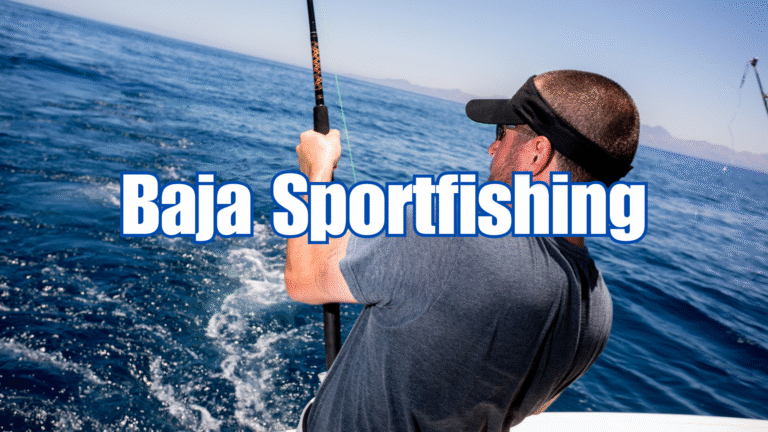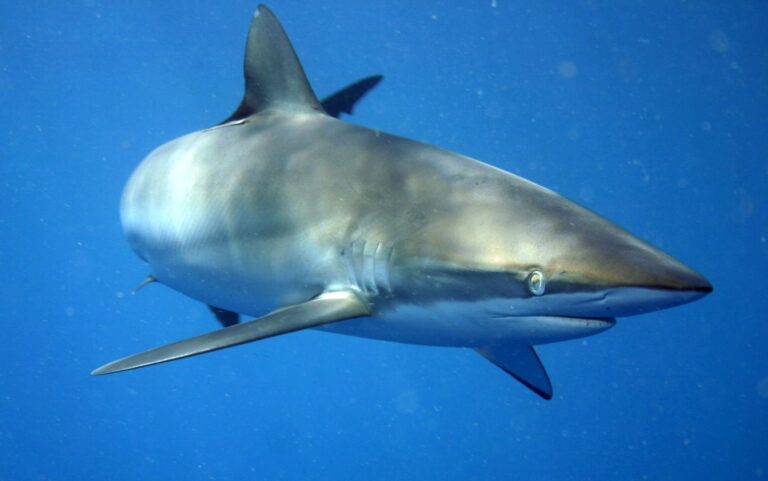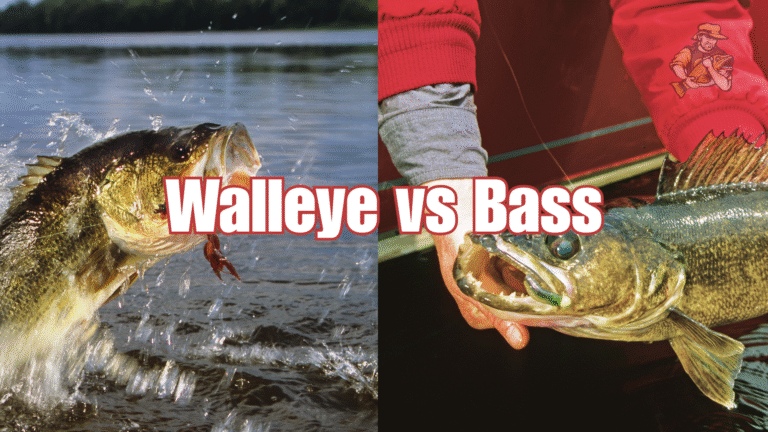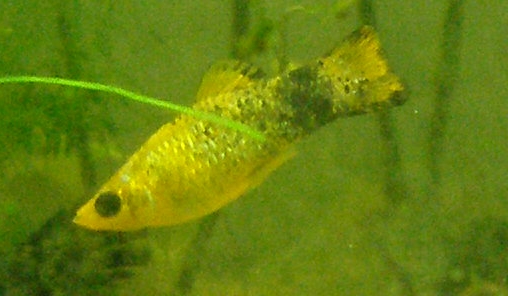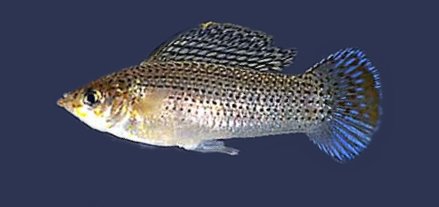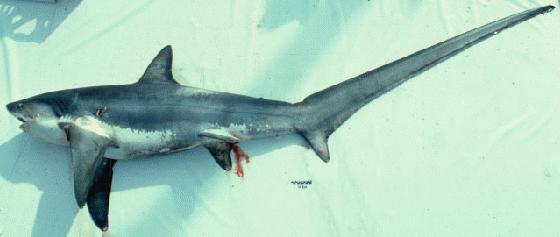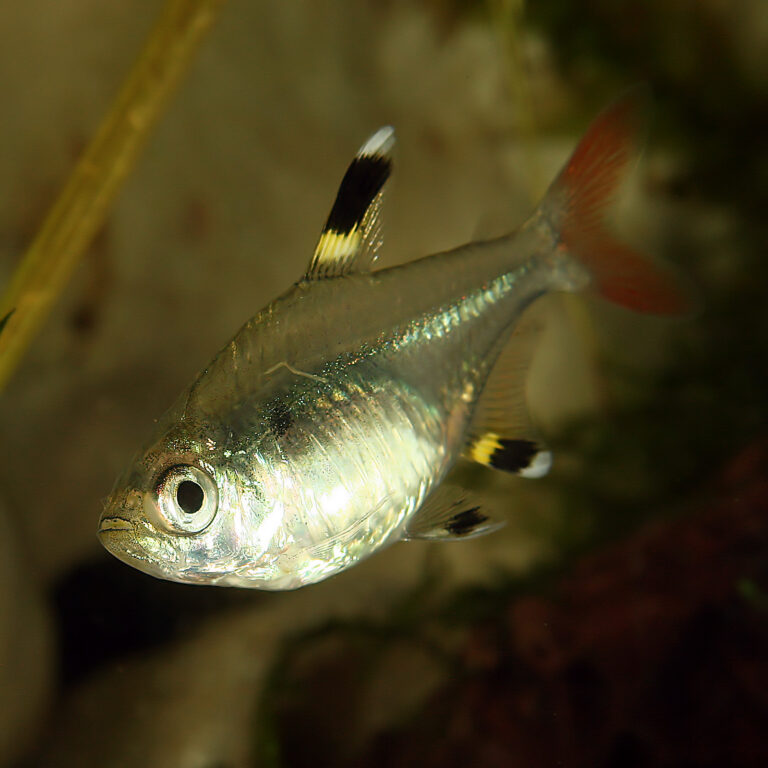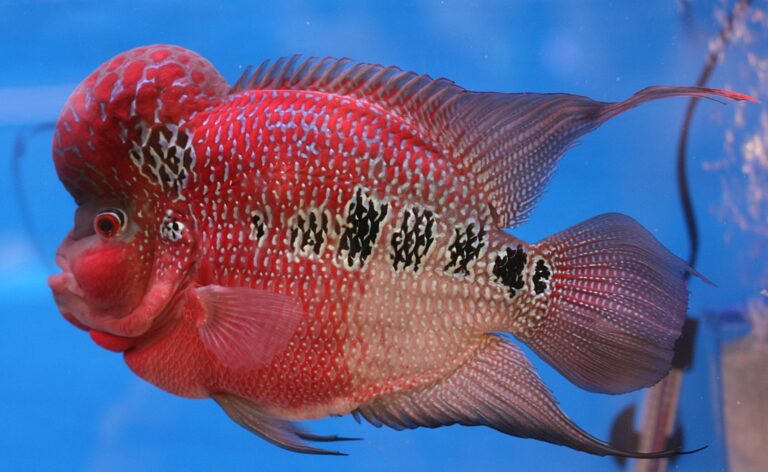Shortfin Mako Shark
By Ryan Maron | Last Modified: July 9, 2025
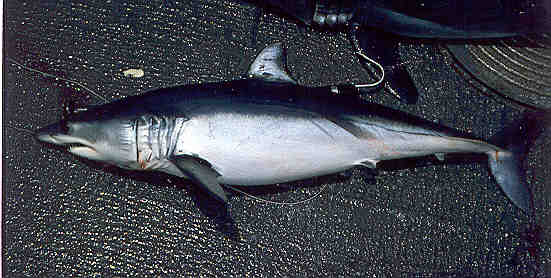
The Shortfin Mako Shark stands as one of the ocean’s most remarkable predators, combining exceptional speed with sophisticated hunting capabilities that have evolved over millions of years. Known scientifically as *Isurus oxyrinchus*, this pelagic shark represents the pinnacle of aquatic locomotion, capable of reaching speeds that exceed most other marine vertebrates. As an apex predator in open ocean ecosystems, the Shortfin Mako Shark plays a crucial role in maintaining the delicate balance of marine food webs, regulating populations of mid-level predators and contributing to the overall health of pelagic environments.
The ecological significance of the Shortfin Mako Shark extends far beyond its impressive physical attributes. This species serves as a key indicator of ocean health, with population fluctuations reflecting broader environmental changes in marine ecosystems. Commercial and recreational fisheries have long targeted these sharks for their meat and fins, while sport fishing enthusiasts prize them for their acrobatic fighting ability and remarkable speed. However, increasing fishing pressure and habitat degradation have raised concerns about the long-term sustainability of Shortfin Mako Shark populations worldwide.
| Feature | Details |
| Common Name | Shortfin Mako Shark |
| Scientific Name | Isurus oxyrinchus |
| Family | Lamnidae |
| Typical Size | 200-400 cm (6.5-13 ft), 60-300 kg (130-660 lbs) |
| Habitat | Open ocean, pelagic waters |
| Diet | Fish, squid, marine mammals |
| Distribution | Global, temperate and tropical waters |
| Conservation Status | Endangered (IUCN Red List) |
Taxonomy & Classification
The Shortfin Mako Shark belongs to the family Lamnidae, commonly known as mackerel sharks, which includes some of the ocean’s most formidable predators. Within this family, the genus *Isurus* contains only two species: the Shortfin Mako (*I. oxyrinchus*) and the Longfin Mako (*I. paucus*). The scientific name *oxyrinchus* derives from Greek roots meaning “sharp snout,” directly referencing the species’ distinctive pointed rostrum that contributes to its hydrodynamic efficiency.
Taxonomically, the Shortfin Mako Shark represents an ancient lineage that has remained relatively unchanged for approximately 45 million years. Fossil evidence suggests that early mako sharks possessed similar morphological characteristics to modern specimens, indicating a highly successful evolutionary design. The family Lamnidae shares common ancestry with other large pelagic sharks, including the Great White Shark, demonstrating the evolutionary advantages of their shared physiological adaptations.
Recent molecular studies have revealed interesting phylogenetic relationships within the Lamnidae family. These investigations indicate that the Shortfin Mako Shark diverged from its closest relatives approximately 20 million years ago, developing unique adaptations that enabled specialization in high-speed pursuit hunting. The species exhibits minimal genetic variation across global populations, suggesting relatively recent worldwide distribution and high gene flow between oceanic regions.
Classification hierarchies place the Shortfin Mako Shark within the broader context of cartilaginous fish evolution. As members of the class Chondrichthyes, these sharks share fundamental characteristics with rays and skates, including cartilaginous skeletons and specialized sensory systems. The order Lamniformes encompasses various shark families adapted for pelagic lifestyles, with the Lamnidae representing the most specialized pursuit predators within this group.
Physical Description
The Shortfin Mako Shark possesses a streamlined, torpedo-shaped body that represents the epitome of hydrodynamic design in marine vertebrates. Adults typically reach lengths of 200-400 centimeters, with females generally achieving larger sizes than males. The species exhibits pronounced sexual dimorphism, with mature females often exceeding 300 centimeters while males rarely surpass 250 centimeters in length. Body weight varies considerably with size, ranging from 60 kilograms in smaller individuals to over 300 kilograms in large females.
The shark’s coloration follows a classic counter-shading pattern that provides effective camouflage in open ocean environments. The dorsal surface displays a brilliant metallic blue that seamlessly transitions to bright silver on the flanks and pure white on the ventral surface. This coloration pattern, known as countershading, helps the shark blend with the water column when viewed from above or below, making it nearly invisible to both prey and potential threats.
Distinctive anatomical features include a sharply pointed snout, large black eyes, and a crescent-shaped tail fin that provides exceptional propulsive power. The pectoral fins are relatively short and broad, positioned to minimize drag while providing stability during high-speed pursuits. The first dorsal fin is triangular and positioned relatively far back on the body, while the second dorsal fin is much smaller and located near the tail region.
The Shortfin Mako Shark’s dentition reflects its predatory lifestyle, with long, narrow, curved teeth designed for grasping fast-moving prey. The upper jaw contains approximately 12-16 teeth per side, while the lower jaw holds 11-15 teeth per side. These teeth lack serrations, distinguishing them from many other shark species and reflecting their specialization for capturing rather than cutting prey. The teeth are continuously replaced throughout the shark’s lifetime, ensuring optimal feeding efficiency.
Internal anatomical features include a specialized circulatory system that enables regional endothermy, allowing the shark to maintain elevated body temperatures in cold water. The rete mirabile, a network of counter-current blood vessels, conserves heat generated by muscle activity, providing significant advantages in pursuing prey and maintaining activity levels in various thermal environments.
Habitat & Distribution
The Shortfin Mako Shark inhabits pelagic waters across temperate and tropical oceans worldwide, demonstrating remarkable adaptability to diverse marine environments. This species typically occupies the epipelagic zone, from the surface to depths of approximately 500 meters, though individuals have been recorded at depths exceeding 740 meters. The shark’s distribution spans both hemispheres, with populations found in the Atlantic, Pacific, and Indian Oceans.
Temperature preferences play a crucial role in determining Shortfin Mako Shark distribution patterns. These sharks favor water temperatures ranging from 17-22°C, though their endothermic capabilities allow them to tolerate much colder conditions. Seasonal migrations often correspond with temperature gradients, with individuals moving toward higher latitudes during warmer months and returning to equatorial regions as temperatures decline.
In the North Atlantic, Shortfin Mako Sharks range from the Gulf of Mexico and Caribbean Sea northward to the waters off Newfoundland and Norway. Pacific populations extend from California to Alaska in the eastern Pacific, while western Pacific populations inhabit waters from Japan to Australia and New Zealand. Indian Ocean populations are found from the Red Sea and Persian Gulf to the southern tip of Africa and across to western Australia.
Habitat preferences within these broad distributional ranges show distinct patterns related to prey availability and oceanographic features. The sharks frequently associate with upwelling areas, continental shelf edges, and seamounts where prey density is typically higher. These productive regions provide abundant food sources, including various fish species, squid, and marine mammals that form the foundation of the mako’s diet.
The species exhibits remarkable site fidelity to certain feeding areas while simultaneously undertaking extensive migrations that can span thousands of kilometers. Satellite tagging studies have revealed individuals traveling from the western Atlantic to European waters, demonstrating the truly oceanic nature of this species. These movements often correlate with seasonal changes in prey distribution and reproductive cycles.
Environmental factors significantly influence habitat selection patterns in Shortfin Mako Sharks. Water clarity, current systems, and seasonal productivity cycles all affect the suitability of different oceanic regions. The sharks tend to avoid areas with extremely low oxygen concentrations and show preferences for regions with moderate to high dissolved oxygen levels that support their high metabolic demands.
Diet & Feeding Behavior
The Shortfin Mako Shark functions as an apex predator with a diverse diet that reflects its position at the top of pelagic food webs. Primary prey items include a wide variety of bony fish species, cephalopods, and occasionally marine mammals. The shark’s exceptional speed and agility enable it to capture fast-swimming prey that would be inaccessible to slower predators, filling a unique ecological niche in open ocean ecosystems.
Bony fish constitute the largest portion of the Shortfin Mako Shark’s diet, with species composition varying by geographic region and season. Common prey fish include mackerel, tuna, sardines, anchovies, and various deep-sea species. The sharks demonstrate remarkable selectivity, often targeting energy-rich species that provide optimal nutritional returns for the energy expended during pursuit. Stomach content analyses have revealed prey fish ranging from small schooling species to large pelagic fish exceeding 50 kilograms.
Cephalopods represent another significant dietary component, with squid species forming a substantial portion of the diet in many regions. The sharks are particularly effective at capturing fast-moving squid, using their speed advantage to overcome these highly maneuverable prey items. Octopus species are consumed less frequently but provide important nutritional variety, particularly in areas where squid populations are limited.
Feeding behavior in Shortfin Mako Sharks involves sophisticated hunting strategies that maximize energy efficiency while minimizing risk. The sharks employ burst-and-glide swimming patterns, conserving energy during search phases and unleashing explosive speed when prey is detected. Their exceptional acceleration capabilities allow them to surprise prey items, often attacking from below to take advantage of the counter-shading camouflage effect.
The species exhibits opportunistic feeding behavior, adjusting hunting strategies based on prey availability and environmental conditions. During periods of high prey density, such as during fish spawning aggregations, multiple sharks may concentrate in relatively small areas to exploit these temporary food sources. Individual sharks have been observed following commercial fishing vessels, capitalizing on discarded bycatch and fish cleaning operations.
Prey handling techniques vary depending on the size and type of prey encountered. Smaller fish are typically consumed whole, while larger prey items may be attacked multiple times or consumed in portions. The shark’s teeth are specifically adapted for grasping rather than cutting, requiring different feeding strategies compared to sharks with serrated teeth. This adaptation reflects the species’ specialization for capturing rather than processing prey.
Behavior & Adaptations
The Shortfin Mako Shark exhibits remarkable behavioral adaptations that enable its success as a high-speed pelagic predator. Swimming behavior represents the most distinctive aspect of this species, with documented speeds reaching 74 kilometers per hour in short bursts. This extraordinary velocity is achieved through a combination of anatomical features, physiological adaptations, and sophisticated swimming techniques that maximize propulsive efficiency while minimizing energy expenditure.
The shark’s swimming pattern typically involves cruise-and-dash behavior, maintaining moderate speeds of 3-5 kilometers per hour during search phases and accelerating dramatically when prey is detected. This strategy conserves energy while maintaining the capability for explosive pursuit when opportunities arise. The species’ ability to leap completely out of the water during feeding or when hooked by anglers demonstrates the remarkable power generated by its muscular system.
Thermoregulatory behavior sets the Shortfin Mako Shark apart from most other shark species. The shark’s ability to maintain elevated body temperatures through regional endothermy provides significant advantages in cold water environments. This physiological adaptation enables the species to maintain high activity levels and pursue prey effectively across a wide range of water temperatures, expanding its ecological niche beyond that of purely ectothermic sharks.
Social behavior in Shortfin Mako Sharks remains somewhat enigmatic, with most observations suggesting primarily solitary lifestyles. However, aggregations do occur under specific circumstances, particularly during feeding events or in areas of high prey density. These temporary gatherings appear to be driven by resource availability rather than social attraction, with individuals typically dispersing once feeding opportunities diminish.
The species demonstrates remarkable navigational abilities, undertaking extensive migrations that suggest sophisticated orientation mechanisms. Research indicates that these sharks may use a combination of magnetic fields, water chemistry, and celestial cues to navigate across vast oceanic distances. The ability to return to specific feeding areas or breeding grounds after traveling thousands of kilometers represents one of the most impressive navigation feats in the marine world.
Behavioral adaptations for predator avoidance include the use of depth changes and rapid directional shifts when threatened. While adult Shortfin Mako Sharks have few natural predators, they may face threats from larger sharks, killer whales, and human activities. The species’ speed and agility provide effective escape mechanisms, allowing individuals to outmaneuver most potential threats through rapid acceleration and unpredictable movement patterns.
Activity patterns show both diurnal and nocturnal behavior, with feeding activity occurring throughout the day and night. However, some studies suggest increased activity during dawn and dusk periods when prey species may be more vulnerable or concentrated. These crepuscular activity peaks may reflect optimal hunting conditions when light levels provide advantages for visual predators while potentially compromising prey detection capabilities.
Reproduction & Life Cycle
The reproductive biology of the Shortfin Mako Shark reflects the species’ adaptation to pelagic environments and contributes to its vulnerability to overfishing. Sexual maturity occurs relatively late in life, with males reaching reproductive capability at approximately 7-9 years and females maturing at 18-21 years of age. This delayed maturation represents one of the species’ most significant conservation challenges, as it limits the population’s ability to recover from fishing pressure.
Size at maturity varies geographically, with males typically reaching reproductive maturity at lengths of 185-200 centimeters and females at 275-300 centimeters. These size thresholds correspond to significant physiological changes, including the development of reproductive organs and the hormonal systems necessary for successful reproduction. The extended juvenile period allows for substantial growth and energy accumulation before the metabolic demands of reproduction begin.
Mating behavior in Shortfin Mako Sharks involves complex courtship rituals that remain poorly understood due to the challenges of observing these interactions in the wild. Evidence suggests that mating may occur in specific geographic regions during particular seasons, with individuals potentially undertaking long migrations to reach breeding areas. The species exhibits internal fertilization, with males using claspers to transfer sperm to females during mating events.
The reproductive strategy of Shortfin Mako Sharks involves ovoviviparity, where embryos develop within eggs inside the mother’s body. This mode of reproduction provides protection for developing young while allowing for extended developmental periods. The gestation period lasts approximately 15-18 months, representing one of the longest pregnancy periods among shark species and further limiting reproductive potential.
Embryonic development includes a unique form of intrauterine feeding known as oophagy, where developing embryos consume unfertilized eggs provided by the mother. This nutritional strategy enables the production of relatively large, well-developed young that are better equipped to survive in the challenging pelagic environment. The largest embryo in each uterus may also consume smaller siblings, a phenomenon known as intrauterine cannibalism.
Litter sizes are typically small, ranging from 4-25 pups, with an average of 8-10 offspring per reproductive event. The small litter size reflects the species’ investment in individual offspring quality rather than quantity, with each pup receiving substantial maternal resources during development. Newborn sharks measure approximately 60-70 centimeters at birth and are immediately capable of independent survival.
Reproductive intervals are believed to be 2-3 years, meaning that females do not reproduce annually even when mature. This extended reproductive cycle, combined with late maturity and small litter sizes, results in extremely low reproductive rates that make populations vulnerable to overexploitation. The species’ life history characteristics are typical of large, slow-growing predators that evolved in relatively stable environments with low natural mortality rates.
Juvenile survival rates are difficult to assess in wild populations, but evidence suggests that young sharks face significant challenges during their first years of life. Predation pressure from larger sharks, including adults of their own species, represents a major source of mortality. Additionally, juveniles must develop the hunting skills necessary for success in the competitive pelagic environment while avoiding various threats.
Predators & Threats
Despite their position as apex predators, Shortfin Mako Sharks face various natural threats and an increasing array of human-induced pressures that collectively impact population stability. Adult sharks have few natural predators due to their size, speed, and formidable defensive capabilities. However, killer whales (*Orcinus orca*) represent the most significant natural threat to mature individuals, with documented predation events involving coordinated attacks by whale pods.
Larger shark species may occasionally prey upon juvenile or smaller adult Shortfin Mako Sharks, particularly in areas where multiple large predator species overlap. The Great White Shark and Tiger Shark have been implicated in occasional predation events, though such interactions are relatively rare and typically involve smaller individuals or unusual circumstances.
Human activities represent the most significant threat to Shortfin Mako Shark populations worldwide. Commercial fishing operations target these sharks for their meat, fins, and liver oil, with particularly high fishing pressure in international waters where regulation is limited. The species’ high economic value in both commercial and recreational fisheries has led to intensive exploitation that exceeds sustainable levels in many regions.
Bycatch mortality in commercial fishing operations poses an additional significant threat, as Shortfin Mako Sharks are frequently caught incidentally in longline fisheries targeting tuna and other pelagic species. The sharks’ attraction to baited hooks and their tendency to inhabit the same waters as commercially valuable fish species make them particularly vulnerable to this form of mortality. Even when released, post-release survival rates are often poor due to the physiological stress of capture.
Habitat degradation and climate change present emerging threats that may significantly impact Shortfin Mako Shark populations in the future. Ocean warming and acidification could alter prey distributions and availability, forcing sharks to modify their behavior and potentially reducing their fitness. Changes in ocean currents and temperature patterns may also affect the species’ migration routes and breeding areas.
Pollution represents another growing concern, with bioaccumulation of heavy metals, pesticides, and other contaminants potentially affecting shark health and reproduction. The species’ position at the top of marine food webs makes them particularly susceptible to biomagnification of toxic substances, which may impair immune function, reproduction, and survival rates.
The illegal shark fin trade continues to drive fishing pressure on Shortfin Mako Sharks, despite international conservation efforts. The species’ large fins command high prices in certain markets, creating economic incentives for continued exploitation. This trade often involves finning practices where sharks are caught, their fins removed, and the bodies discarded at sea, representing an extremely wasteful use of marine resources.
Ship strikes and boat collisions pose localized threats, particularly in areas with heavy marine traffic. The sharks’ tendency to surface and their curiosity about vessels can lead to accidental encounters that result in injury or death. While these incidents are relatively rare, they may have cumulative impacts on local populations.
Conservation Status
The International Union for Conservation of Nature (IUCN) has classified the Shortfin Mako Shark as Endangered on the Red List of Threatened Species, reflecting significant population declines observed across the species’ global range. This designation indicates that the species faces a high risk of extinction in the wild unless current threats are addressed through effective conservation measures. The assessment is based on population trend data, fishing mortality rates, and the species’ biological characteristics that make it particularly vulnerable to overexploitation.
Population assessments conducted by various regional fisheries management organizations have consistently documented declining trends in Shortfin Mako Shark abundance. In the North Atlantic, population models suggest declines of 50-79% from historical levels, with similar patterns observed in other ocean basins. These declines are primarily attributed to overfishing, both as target species and bycatch in commercial fisheries.
The species’ life history characteristics make it particularly susceptible to fishing pressure and slow to recover from population declines. Late sexual maturity, long gestation periods, small litter sizes, and extended reproductive intervals result in extremely low population growth rates. Mathematical models indicate that even modest increases in fishing mortality can lead to population declines that persist for decades.
International conservation efforts have begun to address the threats facing Shortfin Mako Sharks, though implementation and enforcement remain challenging. The species was listed on Appendix II of the Convention on International Trade in Endangered Species (CITES) in 2019, requiring permits for international trade and helping to regulate the commercial exploitation of shark products.
Regional fisheries management organizations have implemented various conservation measures, including catch limits, seasonal closures, and gear restrictions designed to reduce bycatch mortality. However, the effectiveness of these measures varies significantly between regions, and enforcement in international waters remains problematic. The highly migratory nature of the species requires coordinated international conservation efforts to be effective.
The Atlantic States Marine Fisheries Commission and the National Marine Fisheries Service have implemented increasingly restrictive regulations for Shortfin Mako Shark fisheries in U.S. waters. These measures include prohibition of retention in recreational fisheries, commercial quotas, and requirements for circle hooks to reduce bycatch mortality. Similar regulations have been adopted by other countries, though global coordination remains limited.
Research efforts continue to provide crucial information for conservation planning, including population assessments, migration studies, and evaluation of fishing impacts. Satellite tagging programs have revealed the extensive movements of individual sharks and highlighted the need for international cooperation in conservation efforts. These studies also provide data necessary for improving stock assessments and setting appropriate catch limits.
Public awareness campaigns have increased understanding of the species’ conservation needs and the importance of shark conservation in general. Educational programs targeting fishing communities, consumers, and policymakers have contributed to changing attitudes toward shark conservation and reducing demand for shark products in some markets.
The success of conservation efforts will ultimately depend on the implementation of science-based management measures, international cooperation, and continued monitoring of population trends. The species’ slow recovery potential means that conservation actions must be implemented quickly and maintained over extended periods to be effective.
Human Interaction
The relationship between humans and Shortfin Mako Sharks encompasses recreational fishing, commercial exploitation, scientific research, and cultural significance across various societies. Sport fishing for these sharks has developed into a significant recreational activity, with anglers prizing the species for its incredible speed, acrobatic fighting ability, and the challenge of successfully landing such a powerful predator. Charter fishing operations in many coastal regions specifically target Shortfin Mako Sharks, contributing to local economies while raising awareness about marine conservation.
Commercial fisheries have historically targeted Shortfin Mako Sharks for their high-quality meat, which commands premium prices in seafood markets. The flesh is prized for its firm texture and mild flavor, making it popular in restaurants and retail markets worldwide. However, sustainable commercial fishing practices have become increasingly important as population declines have become apparent. Many commercial operations now participate in research programs and adopt conservation-minded practices to ensure long-term viability.
The species plays a crucial role in marine research, serving as a model organism for studying shark physiology, behavior, and ecology. Scientific investigations have revealed remarkable adaptations including regional endothermy, sophisticated navigation abilities, and unique reproductive strategies. These research findings contribute to broader understanding of marine ecosystems and inform conservation strategies for multiple species.
Tagging and tracking programs have provided unprecedented insights into Shortfin Mako Shark behavior and migration patterns. Satellite telemetry studies have revealed transoceanic movements and habitat preferences that were previously unknown. These research efforts require collaboration between scientists, fishing communities, and conservation organizations to achieve meaningful results.
Cultural significance varies among different societies, with some Pacific Island cultures traditionally regarding sharks as spiritual guardians or ancestors. These cultural perspectives often emphasize respect for marine life and sustainable use of ocean resources. Understanding and incorporating traditional knowledge into modern conservation efforts can enhance the effectiveness of protection measures.
The species has captured public imagination through documentaries, literature, and popular media, contributing to broader awareness of shark conservation issues. Educational programs in schools and aquariums use the Shortfin Mako Shark as an example of marine adaptation and the importance of ocean conservation. These efforts help build public support for conservation measures and sustainable fishing practices.
Shark attacks involving Shortfin Mako Sharks are extremely rare, with only a few documented cases historically. The species’ preference for open ocean environments and fish prey means that encounters with humans are infrequent. When interactions do occur, they are typically associated with fishing activities rather than unprovoked attacks on swimmers or divers.
Economic impacts of Shortfin Mako Shark conservation measures affect various stakeholders, including commercial fishermen, recreational fishing operations, and coastal communities. Balancing conservation needs with economic considerations requires careful planning and often involves compensation or alternative livelihood programs for affected communities.
The development of shark ecotourism has created new economic opportunities while promoting conservation awareness. Cage diving operations and shark watching tours provide alternative income sources for coastal communities while fostering appreciation for these remarkable predators. These activities can generate significant revenue while contributing to conservation efforts through education and research funding.
Interesting Facts
The Shortfin Mako Shark holds the distinction of being the fastest shark in the world, capable of reaching speeds of 74 kilometers per hour in short bursts. This extraordinary velocity exceeds that of most other marine vertebrates and enables the species to pursue and capture prey that would be impossible for slower predators to catch. The shark’s streamlined body design and powerful tail fin work together to generate this remarkable speed through water.
Regional endothermy allows Shortfin Mako Sharks to maintain body temperatures up to 10 degrees Celsius above ambient water temperature. This physiological adaptation provides significant advantages in cold water environments and enables the species to maintain high activity levels across a wide range of thermal conditions. The heat-generating mechanism involves specialized blood vessel arrangements that conserve metabolically produced heat.
The species exhibits remarkable jumping ability, with documented leaps reaching heights of 6 meters above the water surface. These spectacular displays often occur during feeding events or when the sharks are hooked by anglers. The jumping behavior demonstrates the incredible power generated by the shark’s muscular system and provides insight into their exceptional athletic capabilities.
Shortfin Mako Sharks possess some of the largest brain-to-body ratios among shark species, suggesting advanced cognitive abilities. Research has indicated that these sharks can learn and remember complex behaviors, navigate vast oceanic distances, and adapt their hunting strategies based on environmental conditions. This intelligence contributes to their success as apex predators in challenging pelagic environments.
The species’ teeth are continuously replaced throughout their lifetime, with individual sharks potentially producing thousands of teeth over their lifespan. Unlike many shark species, Shortfin Mako Shark teeth lack serrations, reflecting their specialization for grasping rather than cutting prey. The tooth replacement rate varies with age and feeding activity, with younger sharks typically replacing teeth more frequently.
Fossil evidence suggests that mako sharks have existed for approximately 45 million years, with relatively little morphological change over this extended period. This evolutionary stability indicates that the species’ body plan and physiological adaptations represent a highly successful design for pelagic predation. The fossil record provides valuable insights into the species’ evolutionary history and adaptation to marine environments.
The species demonstrates remarkable site fidelity, with individual sharks returning to specific feeding areas across multiple seasons. Satellite tracking studies have revealed that some sharks travel thousands of kilometers only to return to previously visited locations, suggesting sophisticated navigation abilities and memory of productive feeding grounds. This behavior has important implications for conservation planning and habitat protection.
Shortfin Mako Sharks can dive to depths exceeding 740 meters, though they typically remain in the upper 500 meters of the water column. These deep dives may be associated with prey pursuit or thermoregulatory behavior, allowing the sharks to access different thermal environments. The species’ ability to tolerate significant pressure changes demonstrates their physiological adaptability.
The gestation period of 15-18 months represents one of the longest pregnancy periods among shark species. This extended development time allows for the production of large, well-developed young that are better equipped to survive in the challenging pelagic environment. The investment in offspring quality rather than quantity reflects the species’ adaptation to stable oceanic conditions.
Individual Shortfin Mako Sharks can live for several decades, with some estimates suggesting maximum ages of 25-30 years. This longevity, combined with late sexual maturity, contributes to the species’ vulnerability to overfishing. Age determination studies use vertebral growth rings similar to tree rings to estimate individual ages and understand population dynamics.
Frequently Asked Questions
How fast can a Shortfin Mako Shark swim?
Shortfin Mako Sharks can reach speeds of up to 74 kilometers per hour (46 mph) in short bursts, making them the fastest shark species in the world. Their typical cruising speed is much slower, around 3-5 kilometers per hour, but they can accelerate rapidly when pursuing prey or escaping threats. This exceptional speed is achieved through their streamlined body design, powerful tail fin, and specialized muscle structure.
What makes Shortfin Mako Sharks different from other sharks?
Shortfin Mako Sharks are distinguished by their regional endothermy, which allows them to maintain body temperatures above ambient water temperature. This physiological adaptation, combined with their exceptional speed and jumping ability, sets them apart from most other shark species. They also possess unserated teeth adapted for grasping prey, unlike many sharks that have cutting teeth with serrated edges.
Are Shortfin Mako Sharks dangerous to humans?
Shortfin Mako Sharks pose minimal danger to humans, with extremely few documented attacks throughout history. Their preference for open ocean environments and fish prey means encounters with humans are rare. Most interactions occur during fishing activities rather than unprovoked encounters. The species’ speed and agility typically lead them to avoid human contact rather than engage aggressively.
Why are Shortfin Mako Sharks endangered?
Shortfin Mako Sharks are classified as Endangered primarily due to overfishing and their slow reproductive rate. The species matures late, has long gestation periods, and produces small litters, making populations slow to recover from fishing pressure. Commercial and recreational fishing, combined with bycatch mortality, has led to significant population declines across their global range.
Conclusion
The Shortfin Mako Shark represents one of nature’s most remarkable evolutionary achievements, combining exceptional speed, sophisticated physiology, and complex behaviors that have enabled success in the challenging pelagic environment. However, this magnificent predator now faces an uncertain future due to human activities that have pushed populations to endangered status. The species’ slow reproductive rate and late maturity make recovery particularly challenging, requiring immediate and sustained conservation efforts to prevent further decline. As apex predators, Shortfin Mako Sharks play a crucial role in maintaining healthy marine ecosystems, making their conservation essential not only for the species itself but for the broader health of our oceans.
Share The Article:
More Fish Species:
-
Madtom Catfish
The Madtom Catfish represents one of North America’s most fascinating yet underappreciated groups of freshwater fish. These diminutive members…
-
Blue Platy
The Blue Platy (Xiphophorus maculatus) stands as one of the most recognizable and culturally significant freshwater fish species in…
-
Tuxedo Platy
The Tuxedo Platy (Xiphophorus maculatus) stands as one of the most recognizable and beloved freshwater aquarium fish species, distinguished…
-
Corydoras Catfish
Corydoras catfish represent one of the most diverse and ecologically significant groups of freshwater bottom-dwelling fish in South American…
-
Red Belly Piranha
The Red Belly Piranha (*Pygocentrus nattereri*) stands as one of South America’s most misunderstood freshwater predators, wielding razor-sharp teeth…
-
Delta Tail Betta
The Delta Tail Betta (Betta splendens) represents one of the most recognizable and sought-after varieties within the aquarium trade,…
Discover
-
Utah Fishing License Guide: Costs, Requirements & Hidden Tips for 2025
When I first planned a fishing trip to Utah’s beautiful waters about a decade ago, figuring out the licensing…
-
Fishing Tips for Beginners: An Expert Guide to Your First Successful Catch
Getting started with fishing can feel overwhelming. Trust me, I’ve been there – staring at walls of equipment, trying…
-
Fly Tying for Fishing Success: A Practical Guide for Anglers
There’s something deeply satisfying about catching a fish on a fly you’ve tied with your own hands. I still…
-
Baja Sportfishing: Marlin, Tuna, and Dorado Tactics
The first time I ventured into Baja sportfishing waters, I did almost everything wrong. I chartered a boat out…
-
Silky Shark
The Silky Shark represents one of the most widespread and ecologically significant requiem sharks in tropical and subtropical waters…
-
Walleye vs Bass: Different Strategies for Freshwater Predators
I still remember my first dedicated walleye trip back in 2009. After fifteen years of chasing mostly bass, I…
Discover
-
Master Deep Ocean Fishing: Proven Methods for Massive Catches
There’s something almost magical about heading far offshore, where the continental shelf drops away and you’re floating above thousands…
-
Balloon Molly
The Balloon Molly (*Poecilia latipinna* var.) represents one of the most distinctive and popular ornamental fish varieties in the…
-
Molly Fish
The Molly Fish represents one of the most adaptable and ecologically significant freshwater species in tropical and subtropical regions…
-
Thresher Shark
The Thresher Shark represents one of the ocean’s most distinctive and captivating apex predators, renowned for its extraordinarily elongated…
-
Pristella Tetra
The Pristella Tetra (Pristella maxillaris) stands as one of South America’s most distinctive freshwater aquarium species, renowned for its…
-
Flowerhorn Cichlid
The Flowerhorn Cichlid represents one of the most distinctive and culturally significant hybrid fish species in contemporary aquarium keeping….

